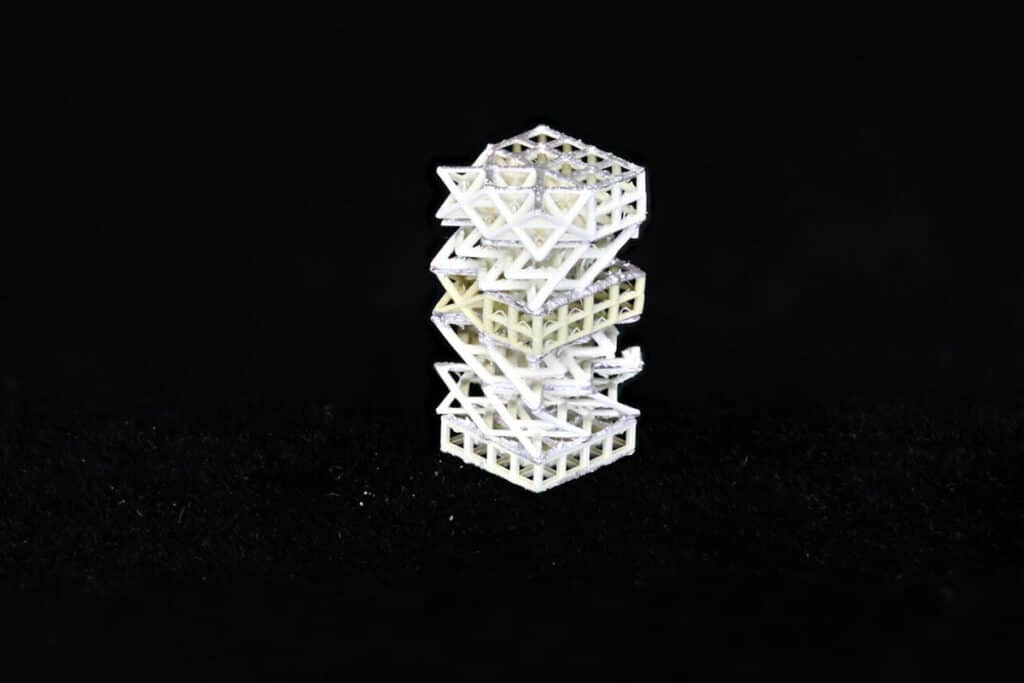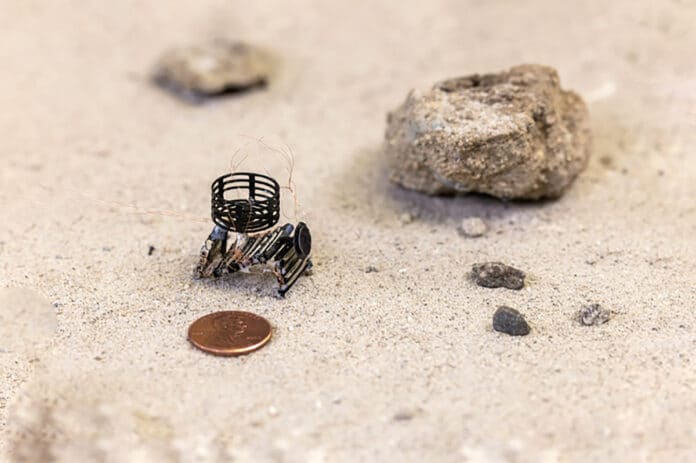Most robots, no matter their size, are typically built in a series of complex manufacturing steps that integrate limbs, electronics, and active components. The process results in heavier weights, bulkier volumes, and reduced force output.
Now, UCLA engineers and their colleagues have developed a new design strategy and 3D printing technique to build robots in one single step. The tiny robots can walk, maneuver and jump.
The new technology enabled the entire mechanical and electronic systems needed to operate a robot to be manufactured all at once by a new type of 3D printing process for engineered active materials with multiple functions, or ‘metamaterials.’ Once 3D printed, a “meta-bot” can carry out different tasks – propulsion, movement, sensing, and decision-making.
The printed metamaterials consist of an internal network of sensory, moving, and structural elements that move by themselves after being programmed. With the internal network of moving and sensing already in place, the only external component needed is a small battery to power the robot.

The team integrated an onboard battery and controller for the fully autonomous operation of the 3D printed robots – each at the size of a fingernail. According to the researchers, the methodology could lead to new designs for biomedical robots, such as self-steering endoscopes or tiny swimming robots, which can emit ultrasounds and navigate themselves near blood vessels to deliver drug doses at specific target sites inside the body.
The meta-bots can also explore hazardous environments, such as a collapsed building, where the robot can quickly access confined spaces, assess threat levels, and help rescue efforts by finding people trapped in the rubble.
The key in the UCLA-led, all-in-one method is the design and printing of piezoelectric metamaterials that can change shape and move in response to an electric field. The robotic materials are composed of intricate piezoelectric and structural elements that are designed to bend, flex, twist, rotate, expand or contract at high speeds. The team also presented a methodology that can be used to design the robotic materials, enabling users to create their own models and print the materials into a robot directly.
“This allows actuating elements to be arranged precisely throughout the robot for fast, complex, and extended movements on various types of terrain,” said the study’s lead author Huachen Cui, a UCLA postdoctoral scholar in Zheng’s Additive Manufacturing and Metamaterials Laboratory. “With the two-way piezoelectric effect, the robotic materials can also self-sense their contortions, detect obstacles via echoes and ultrasound emissions, as well as respond to external stimuli through a feedback control loop that determines how the robots move, how fast they move, and toward which target they move.”
Using their new technique, researchers built and demonstrated three meta-bots with different capabilities. One robot can navigate around S-shaped corners and randomly placed obstacles, another can escape in response to a contact impact, while the third robot can walk over rough terrain and even make small jumps.
